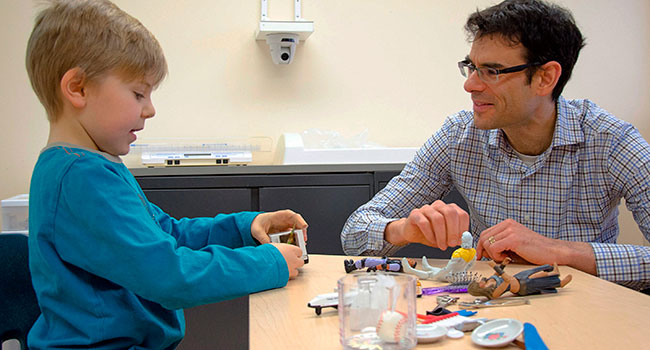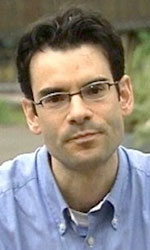Medical researchers reliably predicted autism spectrum disorder (ASD) in a large sample of at-risk children by identifying and tracking early behavioural signs at 12 months of age, according to study findings published Dec. 25 in Child Development.
“This research really reinforces what parents have been telling us for so many years,” said principal investigator Lonnie Zwaigenbaum, pediatrician and director of the Autism Research Centre within the University of Alberta’s Faculty of Medicine & Dentistry.
“Some of the earliest signs may be subtle but they are apparent quite early in life – for many children even by the first birthday,” said Zwaigenbaum, who holds the Stollery Children’s Hospital Foundation Chair in Autism Research and is a Stollery Science Lab Distinguished Researcher.
Zwaigenbaum said specialist care can be difficult to access and a diagnosis of autism spectrum disorder is often not confirmed until age four or five, which is why being able to observe the signs before age three is key to earlier interventions and better outcomes.
“A timely diagnosis of ASD and referral for intensive behavioural and education interventions at the earliest possible age may lead to better long-term outcomes by capitalizing on the brain’s neuroplasticity at younger ages,” the researchers reported.
Early signs foreshadow later diagnoses
The team evaluated 681 infants using a Canadian-developed tool called the Autism Observation Scale for Infants (AOSI) to rate motor control and a broad range of behaviours such as eye contact, response to names, expression of positive emotion and interest in toys. The babies were followed at six, nine, 12, 15 and 18 months and then assessed at two and three years of age to determine which participants met criteria for diagnosis of autism spectrum disorder.
Five hundred of the children were younger siblings of children with ASD, considered nearly 20 times more likely to develop the syndrome than children in the general population.
The researchers found elevated AOSI scores at 12 months accurately identified 52 per cent of the children who were subsequently diagnosed with autism by age three. At six months, the only behaviour associated with a later autism diagnosis was reduced motor control.
The ‘A’ words – autism and advocacy – go hand in hand by Sharon McCarry
“By a year of age, we see a range of behaviours that really do map onto what we are looking for in older children, such as not responding when their name is called, not looking the parent in the eye, not smiling and engaging with parents and other people,” Zwaigenbaum reported.
Zwaigenbaum pointed out that so far the results apply only to children who are at higher risk for autism because of the diagnosis of an older sibling, and the AOSI tool must be used in combination with others to confirm a diagnosis.
Next steps for his research include testing the tool and a related parent questionnaire in the general population and sharing diagnostic knowledge with community pediatricians so families don’t face long waits for specialist care.
Encouraging ‘joyful interactions’
Interventions for children showing signs of autism often focus on coaching parents on how to encourage their child to communicate and make more social connections.
“This approach recognizes the central role of the parent in helping their children learn as they develop,” Zwaigenbaum said. “It’s not just a brief session with a therapist, but instead thinking about how to incorporate learning opportunities throughout daily life through play, caregiving and new experiences.
“Children can benefit even after their parents receive a relatively brief 12 weeks of coaching,” he added. “It’s really about helping children develop functional skills so they can have joyful interactions with their family and the other people in their lives.”
Autism affects roughly one in 66 Canadians and can lead to lifelong issues with social interactions, repetitive behaviours and unusual sensory sensitivities.
| By Gillian Rutherford
The views, opinions and positions expressed by columnists and contributors are the author’s alone. They do not inherently or expressly reflect the views, opinions and/or positions of our publication.


